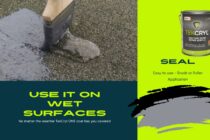Discover the Future of Roofing
EPDM vs GRP Comparison
At Composite Roof Supplies, we recognise that your roof is a vital component of your building’s identity and overall worth. While our GRP fibreglass roofing systems combine resilience with stunning aesthetics, EPDM flat roofing also presents a compelling option with its excellent waterproofing and low maintenance requirements. Both solutions are lightweight and versatile, allowing for seamless integration into various design styles. However, GRP roofing stands out with its elegant finish and ability to enhance your property’s visual appeal, offering a striking balance between durability and attractiveness that leaves a lasting impression. Choose the roofing option that best fits your needs and transforms your space into something truly remarkable.
EPDM vs. GRP: A Comprehensive Comparison
Compare the benefits and drawbacks of EPDM rubber roofs and GRP fibreglass roofs to make an informed decision for your roofing project.
EPDM Rubber Roofs
Known for their affordability and ease of installation, EPDM rubber roofs are a popular choice for budget-conscious homeowners.
- Design Versatility 85%
- Ease of Installation 92%
- Maintenance Needs 75%
GRP Fibreglass Roofs
Offering superior design versatility and aesthetic options, GRP fibreglass roofs are ideal for those seeking a stylish and durable solution.
- Design Versatility 95%
- Ease of Installation 65%
- Maintenance Needs 80%
Why Choose Fibreglass Roofs?
Unmatched Benefits of GRP Roofing
Design Flexibility
Fibreglass roofs can be molded into any shape or size, offering limitless design possibilities to suit any architectural style.
Aesthetic Variety
Available in a multitude of colors and finishes, fibreglass roofs allow you to customize your roof to perfectly match your vision.
Durability
With a lifespan of up to 30 years, fibreglass roofs are built to withstand the test of time, ensuring long-lasting protection.
Low Maintenance
Once installed, fibreglass roofs require minimal upkeep, making them a cost-effective choice in the long run.
Weather Resistance
Designed to endure harsh weather conditions, fibreglass roofs provide reliable protection against the elements.
Value Addition
Enhance your property’s value with a fibreglass roof that combines functionality with visual appeal.
Eco-Friendly
Fibreglass roofs are made from sustainable materials, contributing to a greener environment.
Customisable Options
Tailor your roof to your specific needs with customizable features that offer both practicality and style.
Unmatched Benefits of EPDM Rubber Roofing
Superior Waterproofing
EPDM rubber roofing offers exceptional waterproofing capabilities, ensuring your roof remains leak-free even in heavy rain.
Cost-Effective Solution
Enjoy the affordability of EPDM roofing, which provides a budget-friendly option without compromising on quality.
Easy Installation
EPDM roofs are known for their straightforward installation process, saving you time and reducing labor costs.
Durability and Longevity
With a lifespan of up to 50 years, EPDM roofing is designed to withstand the test of time and harsh weather conditions.
Low Maintenance Requirements
Once installed, EPDM roofs require minimal upkeep, making them a hassle-free choice for homeowners.
Eco-Friendly Material
EPDM is made from sustainable materials, contributing to a greener environment and reducing your carbon footprint.
Choosing the Right Roofing Solution
Conclusion: EPDM vs. GRP Roofing
When deciding between EPDM and GRP roofing systems, homeowners must consider their specific needs and priorities. EPDM rubber roofing offers a cost-effective solution with excellent waterproofing and minimal maintenance, making it ideal for those seeking affordability and ease of installation. On the other hand, GRP fibreglass roofing provides superior design flexibility and aesthetic appeal, perfect for those who value visual impact and durability. Both options deliver reliable protection against the elements, but the choice ultimately depends on whether budget or design versatility is the primary concern. By weighing these factors, homeowners can select the roofing system that best enhances their property’s value and meets their personal preferences.



